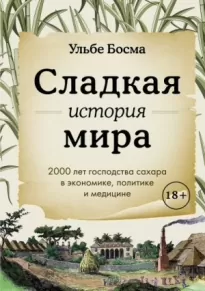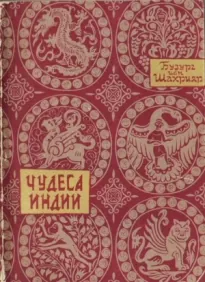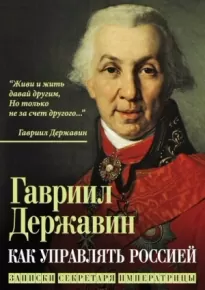Сладкая история мира. 2000 лет господства сахара в экономике, политике и медицине

- Автор: Ульбе Босма
- Жанр: Научная литература / Исторические приключения / История: прочее
Читать книгу "Сладкая история мира. 2000 лет господства сахара в экономике, политике и медицине"
5. Государство и промышленность
1 См.: Conrad Friedrich Stollmeyer, The Sugar Question Made Easy (London: Effingham Wilson, 1845).
2 Ulbe Bosma and Jonathan Curry-Machado, «Two Islands, One Commodity: Cuba, Java, and the Global Sugar Trade (1790–1930),» New West Indian Guide 86, nos. 3–4 (2012): 238–239.
3 Walter Prichard, «Routine on a Louisiana Sugar Plantation under the Slavery Regime,» Mississippi Valley Historical Review 14, no. 2 (1927): 175.
4 Sidney Mintz, «Cañamelar: The Subculture of a Rural Sugar Plantation Proletariat,» in The People of Puerto Rico: A Study in Social Anthropology by Julian Haynes Steward et al. (Urbana: University of Illinois Press, 1956), 337.
5 José Guadalupe Ortega, «Machines, Modernity and Sugar: The Greater Caribbean in a Global Context, 1812–50,» Journal of Global History 9, no. 1 (2014): 10.
6 Franz Carl Achard, D.Angar, and Charles Derosne, Traité complet sur le sucre européen de betteraves: Culture de cette plante considérée sous le rapport agronomique et manufacturier (Paris: chez M. Derosne: chez D.Colas, 1812), viii – x.
7 M.Aymar-Bression, L’industrie sucrière indigène et son vèritable fondateur (Paris: l’Auteur et les principaux Libraries, 1864), 17; J.Flahaut, «Les Derosne, pharmaciens pariciens, de 1779 à 1855,» Revue d’Histoire de la Pharmacie 53, no. 346 (2005): 228.
8 Jean-Louis Thomas, Jean-François Cail: Un acteur majeur de la première révolution industrielle (Chef-Boutonne, France: Association CAIL, 2004), 15–23, 30.
9 Thomas, Jean-François Cail, 37, 85.
10 Ortega, «Machines, Modernity,» 16.
11 J.A.Leon and Joseph Hume, On Sugar Cultivation in Louisiana, Cuba&c. and the British Possessions (London: John Ollivier, 1848), 40–41, 58–60, 65; Nadia Fernández-de-Pinedo, Rafael Castro, and David Pretel, «Technological Transfers and Foreign Multinationals in Emerging Markets: Derosne&Cail in the 19th Century,» Working Paper, Departamento de Análisis Económico, Universidad Autonoma de Madrid, 2014, 22.
12 Thomas, Jean-François Cail, 92.
13 Hugh Thomas, Cuba; or, the Pursuit of Freedom (London: Eyre and Spottiswoode, 1971), 117; Ortega, «Machines, Modernity,» 18–19.
14 Ulbe Bosma, The Making of a Periphery: How Island Southeast Asia Became a Mass Exporter of Labor (New York: Columbia University Press, 2019), 75.
15 Margaret Leidelmeijer, Van Suikermolen tot Grootbedrijf: Technische Verniewung in de Java-Suikerindustrie in de Negentiende Eeuw (Amsterdam: NEHA, 1997), 159; AymarBression, L’industrie sucrière indigène, 20–21.
16 Leidelmeijer, Van Suikermolen, 138, 152.
17 Roger C.Knight, Sugar, Steam and Steel: The Industrial Project in Colonial Java, 1830–1850 (Adelaide, Australia: University of Adelaide Press, 2014), 139–141; Ulbe Bosma, «The Cultivation System (1830–1870) and Its Private Entrepreneurs on Colonial Java,» Journal of Southeast Asian Studies 38, no. 2 (2007): 285.
18 Ulbe Bosma and Remco Raben, Being «Dutch» in the Indies: A History of Creolization and Empire, 1500–1920 (Singapore: NUS Press, 2008), 106–124.
19 Great Britain Parliament and House of Commons, The Sugar Question: Being a Digest of the Evidence Taken before the Committee on Sugar and Coffee Plantations… (London: Smith, Elder, 1848), 40; Ulbe Bosma, The Sugar Plantation in India and Indonesia: Industrial Production, 1770–2010 (Cambridge: Cambridge University Press, 2013), 67.
20 John Alfred Heitmann, The Modernization of the Louisiana Sugar Industry: 1830–1910 (Baton Rouge: Louisiana State University Press, 1987), 33, 35.
21 Lawrence N.Powell, The Accidental City: Improvising New Orleans (Cambridge, MA: Harvard University Press, 2013), 346.
22 Heitmann, The Modernization, 16–19, 42; J.Carlyle Sitterson, Sugar Country: The Cane Sugar Industry in the South 1753–1950 (Lexington: University of Kentucky Press, 1953), 147.
23 Mark Schmitz, Economic Analysis of Antebellum Sugar Plantations in Louisiana (New York: Arno Press, 1977), 39.
24 J.Carlyle Sitterson, «Financing and Marketing the Sugar Crop of the Old South,» Journal of Southern History 10, no. 2 (1944): 189; Sitterson, Sugar Country, 200–202; Richard J.Follett, The Sugar Masters: Planters and Slaves in Louisiana’s Cane World, 1820–1860 (Baton Rouge: Louisiana State University Press, 2007), 35.
25 Daniel Rood, The Reinvention of the Atlantic Slavery: Technology, Labor, Race, and Capitalism in the Greater Caribbean (Oxford: Oxford University Press, 2020), 36; Sitterson, Sugar Country, 148–150; Schmitz, Economic Analysis, 35, 39–40; Follett, The Sugar Masters, 34, 36; Judah Grinberg, Norbert Rillieux and a Revolution in Sugar Processing (Washington, DC: American Chemical Society, 2002).
26 Ortega, «Machines, Modernity,» 19–21; Дирр представляет историю немного иначе, см.: Noël Deerr, The History of Sugar, vol. 2 (London: Chapman and Hall, 1950), 569.
27 Albert Schrauwers, «‘Regenten’ (Gentlemanly) Capitalism: Saint-Simonian Technocracy and the Emergence of the ‘Industrialist Great Club’ in the Mid-Nineteenth Century Netherlands,» Enterprise & Society II, no. 4 (2010): 766; Knight, Sugar, Steam, 63–91.
28 Dale Tomich, «Small Islands and Huge Comparisons: Caribbean Plantations, Historical Unevenness, and Capitalist Modernity,» Social Science History 18, no. 3 (1994): 349.
29 Слова Виктора-Мориса де Брольи цитируются в источнике: Victor Schoelcher, Histoire de l’esclavage pendent les deux dernieres années, vol. 2 (Paris: Pagnerre, 1847), 399.
30 Victor Schoelcher, Des colonies françaises: Abolition immédiate de l’esclavage (Paris: Pagnerre, 1842), xxiii.n.2.
31 Paul Daubrée, Question coloniale sous le rapport industriel (Paris: Impr. de Malteste, 1841), 8, 55–56.
32 A.Chazelles, Émancipation – Transformation: Le système anglais – le système français: Mémoire adressé à la Chambre des Députés à l’occasion du projet de loi concernant le régime des enclaves dans les colonies françaises (Paris: Imprimerie de Guiraudet et Jouaust, 1845), 18.
33 Chazelles, Emancipation – Transformation, 47.
34 Chazelles, Emancipation – Transformation, 56.
35 Jean-Louis Thomas, Jean-François Cail, 192–193, 195; Christian Schnakenbourg, «La création des usines en Guadeloupe (1843–1844),» Bulletin de la Societé d’Histoire de la Guadeloupe, no. 141 (2005): 25–26. Томас немного иначе понимает слово usine («фабрика», «завод») и говорит о десяти центральных заводах на Гваделупе и двух на Мартинике.
36 Nelly Schmidt, «Les paradoxes du developpement industriel des colonies françaises des Caraibes pendant la seconde moitie du XIX siècle: Perspectives comparatives,» Histoire, Économie et Société 8, no. 3 (1989): 321–322.
37 Henry Iles Woodcock, A History of Tobago (London: Frank Cass, 1971), 107, 190, app.
38 William A.Green, British Slave Emancipation: The Sugar Colonies and the Great Experiment 1830–1865 (Oxford: Clarendon Press, 2011), 200; Claude Levy, Emancipation, Sugar, and Federalism: Barbados and the West Indies, 1833–1876 (Gainesville: University Press of Florida, 1979), 95.
39 Jean-François Géraud, «Joseph Martial Wetzell (1793–1857): Une révolution sucrière oubliée à la Réunion,» Bulletin de la Societé d’Histoire de la Guadeloupe, no. 133 (2002): 44–45.
40 Alessandro Stanziani, Labor on the Fringes of Empire: Voice, Exit and the Law (Basingstoke, England: Palgrave Macmillan, 2019), 187.
41 Géraud, «Joseph Martial Wetzell,» 57; Andrés Ramos Mattei, «The Plantations of the Southern Coast of Puerto Rico: 1880–1910,» Social and Economic Studies 37, nos. 1–2 (1988): 369; Peter Richardson, «The Natal Sugar Industry, 1849–1905: An Interpretative Essay,» Journal of African History 23, no. 4 (1982): 520.
42 Thomas, Jean-François Cail, 204–205; Fernández-de-Pinedo, Castro, and Pretel, Technological Transfers, 22.
43 Sudel Fuma, Un exemple d’imperialisme écconomique dans une colonie française aux XIXe siècle – l’île de la Réunion et la Sociele du Crédit Foncier Colonial (Paris: Harmattan, 2001), 31.
44 Schakenbourg, «La creation,» 36, 54–55.
45 W.J.Evans, The Sugar-Planter’s Manual: Being a Treatise on the Art of Obtaining Sugar from the Sugar-Cane (Philadelphia: Lea and Blanchard, 1848), 171–173.
46 Dale Tomich, «Commodity Frontiers, Spatial Economy, and Technological Innovation in the Caribbean Sugar Industry, 1783–1878,» in The Caribbean and the Atlantic World Economy Circuits of Trade, Money and Knowledge, 1650–1914, ed. Adrian Leonard and David Pretel (London: Palgrave Macmillan, 2015), 204.
47 Anthony Trollope, West Indies and the Spanish Main (London: Chapman and Hall, 1867), 183, 202.
48 Noël Deerr, The History of Sugar, vol. 1 (London: Chapman and Hall, 1949), 194; Richard B.Sheridan, «Changing Sugar Technology and the Labour Nexus in the British Caribbean, 1750–1900, with Special Reference to Barbados and Jamaica,» New West Indian Guide 63, nos. 1–2 (1989): 74.
49 Deerr, The History of Sugar, 2:577; Luis Martinez-Fernandez, «The Sweet and the Bitter: Cuban and Puerto Rican Responses to the Mid-Nineteenth-Century Sugar Challenge,» New West Indian Guide 67, nos. 1–2 (1993): 50.
50 Victor H.Olmsted and Henry Gannett, Cuba: Population, History and Resources, 1907 (Washington, DC: US Bureau of the Census, 1909), 131, 143; Bosma, «The Cultivation System,» 280–281. Оценка общего населения Явы приводится в источнике: Bosma, The Making of a Periphery, 29.
51 David Turnbull, Travel in the West Cuba: With Notices of Porto Rico, and the Slave Trade (London: Longman, Orme, Brown, Green, and Longmans, 1840), 129–130.
52 См.: J.Curry-Machado, «Rich Flames and Hired Tears’: Sugar, Sub-Imperial Agents and the Cuban Phoenix of Empire,» Journal of Global History 4, no. 1 (2009): 33–56.
53 Oscar Zanetti Lecuona and Alejandro García Alvarez, Sugar and Railroads: A Cuban History, 1837–1959 (Chapel Hill: University of North Carolina Press, 1998), 25, 78, 95–96; Turnbull, Travel in the West Cuba, 175; Thomas, Cuba, 123.
54 Thomas, Cuba, 118–119. Фрагинальс полагает, что к 1860 году 8,3 % от всех объемов кубинского сахара производилось при помощи вакуумных варочных котлов, но это, вероятно, заниженный показатель. Manuel Moreno Fraginals, El ingenio: El complejo economic social cubano de Azucar (Havana: Comisión Nacional Cubana de la UNESCO, 1964), 119. См. также: J.G.Cantero et al., Los Ingenios: Colección de vistas de los principales ingenios de azúcar de la isla de Cuba (Madrid: Centro Estudios y Experimentación de Obras Públicas, 2005).
55 Jonathan Curry-Machado, Cuban Sugar Industry: Transnational Networks and Engineering Migrants in Mid-Nineteenth Century Cuba (Basingstoke, England: Palgrave Macmillan, 2011), 67; Bosma, «The Cultivation System,» 290.
56 J.Carlyle Sitterson, «Hired Labor on Sugar Plantations of the Ante-Bellum South,» Journal of Southern History 14, no. 2 (1948): 200–201; Sitterson, Sugar Country, 65.
57 Knight, Sugar, Steam and Steel, 56, 60n.109; Dale Tomich, «Sugar Technology and Slave Labor in Martinique, 1830–1848,» New West Indian Guide 63, nos. 1–2 (1989): 128.
58 Schnakenbourg, «La creation,» 39–41, 58, 71, 73; Schmidt, «Les paradoxes,» 314, 325.
59 Raymond E.Crist, «Sugar Cane and Coffee in Puerto Rico, I: The Rôle of Privilege and Monopoly in the Expropriation of the Jibaro,» American Journal of Economics and Sociology 7, no. 2 (1948): 175.
6 °Charles Ralph Boxer, The Golden Age of Brazil, 1695–1750: Growing Pains of a Colonial Society (Berkeley: University of California Press, 1962), 150; Fernando Ortiz, Cuban Counterpoint: Tobacco and Sugar (New York: Vintage, 1970), 278–279.
61 Richard Pares, Merchants and Planters (Cambridge: Cambridge University Press, 1960), 44.
62 Pares, Merchants and Planters, chap. 4; S.D.Smith, Slavery, Family, and Gentry Capitalism in the British Atlantic: The World of the Lascelles, 1648–1834 (Cambridge: Cambridge University Press, 2010), chap. 6.
63 См.: Brian Hoonhout, «The Crisis of the Subprime Plantation Mortgages in the Dutch West Indies, 1750–1775,» Leidschrift 28, no. 2 (2013): 85–100.
64 Sitterson, «Financing and Marketing,» 189.
65 Havana, Bankers’ Magazine (1846–1847): 243; Richard A.Lobdell, Economic Structure and Demographic Performance in Jamaica, 1891–1935 (New York: Garland, 1987), 321–322.
66 Lobdell, Economic Structure, 321.
67 На Кубе положение кредиторов укрепилось в 1850-е годы, вместе с отказом от практики privilegio de ingenio, которая не позволяла забирать мельничное имущество, и в том числе рабов, в случае, если владелец не мог выплатить долги. Во французских сахарных колониях это произошло посредством нового ипотечного закона, принятого в 1848 году, а в Вест-Индии – после принятия в 1854 году Закона об обремененных поместьях. Правительство Бразилии пыталось реформировать залоговое право еще раньше, в 1846 году. См.: Martinez-Fernandez, «The Sweet and the Bitter,» 56; Christian Schnakenbourg, «La disparition des ‘habitation-sucreries’ en Guadeloupe (1848–1906): Recherche sur la désagrégation des structures préindustrielles de la production sucrière antillaise après l’abolition de l’esvalage,» Revue française dв Histoire d’Outre-Mer 74, no. 276 (1987): 265–266; Nicholas Draper, «Possessing People,» in Legacies of British Slave-Ownership: Colonial Slavery and the Formation of Victorian Britain by Catherine Hall et al. (Cambridge: Cambridge University Press, 2014), 43; Peter L.Eisenberg, The Sugar Industry in Pernambuco: Modernization without Change, 1840–1910 (Berkeley: University of California Press, 1974), 73.
68 Trollope, West Indies, 130; Alexander von Humboldt, The Island of Cuba. Translated from the Spanish, with the Notes and a Preliminary Essay by J.S.Thrasher (New York: Derby and Jackson, 1856), 281; Franklin W.Knight, Slave Society in Cuba during the Nineteenth Century (Madison: University of Wisconsin Press, 1970), 119; Edwin Farnsworth Atkins, Sixty Years in Cuba: Reminiscences… (Cambridge: Riverside Press, 1926), 52.
69 Thomas, Cuba, 137; Martín Rodrigo y Alharilla, «From Periphery to Centre: Transatlantic Capital Flows, 1830–1890,» in The Caribbean and the Atlantic World Economy: Circuits of Trade, Money and Knowledge, 1650–1914, ed. Adrian Leonard and David Pretel (London: Palgrave Macmillan, 2015), 221–222.
70 Хотя Кервеген также использовал котлы Ветцеля, с 1850-х годов он постепенно перешел на вакуумные варочные котлы компании Derosne&Cail, как и другие владельцы крупных сахарных плантаций на Реюньоне. См.: Jean François Géraud, Kerveguen Sucrier (Saint-Denis: Université Réunion, n.d.); Fuma, Un exemple d’imperialisme, 54–55, 64, 75.
71 Draper, «Possessing People,» 43; R.W.Beachey, The British West Indies Sugar Industry in the Late 19th Century (Oxford: B. Blackwell, 1957), 36–38.
72 Levy, Emancipation, Sugar and Federalism, 55.
73 См. также: Nicholas Draper, «Helping to Make Britain Great: The Commercial Legacies of Slave-Ownership in Britain,» in Legacies of British Slave-Ownership: Colonial Slavery and the Formation of Victorian Britain by Catherine Hall et al. (Cambridge: Cambridge University Press, 2014), 83, 95, 102.
74 Alan H.Adamson, Sugar without Slaves: The Political Economy of British Guiana, 1838–1904 (New Haven, CT: Yale University Press, 1972), 202–203; Beachey, The British West Indies, 69, 95.
75 Ryan Saylor, «Probing the Historical Sources of the Mauritian Miracle: Sugar Exporters and State Building in Colonial Mauritius,» Review of African Political Economy 39, no. 133 (2012): 474; Arthur Jessop, A History of the Mauritius Government Railways: 1864 to 1964 (Port Louis, Mauritius: J.E.Félix, 1964), 2.
76 Draper, «Helping to Make Britain Great,» 95. О компенсационных фондах для рабовладельцев, живших как в своих владениях, так и за их пределами, см. базу данных «Центра изучения наследия британского рабовладения», https://www.ucl.ac.uk/lbs/project/details/; Richard B.Allen, Slaves, Freedmen and Indentured Laborers in Colonial Mauritius (Port Chester, NY: Cambridge University Press, 1999), 123–127; Bosma, The Sugar Plantation, 85n.159; Richard B.Allen, «Capital, Illegal Slaves, Indentured Labourers and the Creation of a Sugar Plantation Economy in Mauritius, 1810–60,» Journal of Imperial and Commonwealth History 36, no. 2 (2008): 157.
77 G.William Des Voeux, My Colonial Service in British Guiana, St. Lucia, Trinidad, Fiji, Australia, New-Foundland, and Hong Kong with Interludes… (London: John Murray, 1903), 212–225, 279.
78 Galloway, «The Sugar Industry of Pernambuco,» 300–302; Manuel Correia de Andrade, The Land and People of Northeast Brazil (Albuquerque: University of New Mexico Press, 1980), 71.
79 Jean Mazuel, Le sucre en Egypte: Étude de géographie historique et economique (Cairo: Société Royale de Géographie d’Égypte, 1937), 32; Claudine Piaton and Ralph Bodenstein, «Sugar and Iron: Khedive Ismail’s Sugar Factories in Egypt and the Role of French Engineering Companies (1867–1875),» ABE Journal, no. 5 (2014): paras. 7 and 8.
80 F.Robert Hunter, Egypt under the Khedives, 1805–1879: From Household Government to Modern Bureaucracy (Cairo: American University in Cairo Press, 1999), 40; Kenneth M.Cuno, «The Origins of Private Ownership of Land in Egypt: A Reappraisal,» International Journal of Middle East Studies 12, no. 3 (1980): 266.





